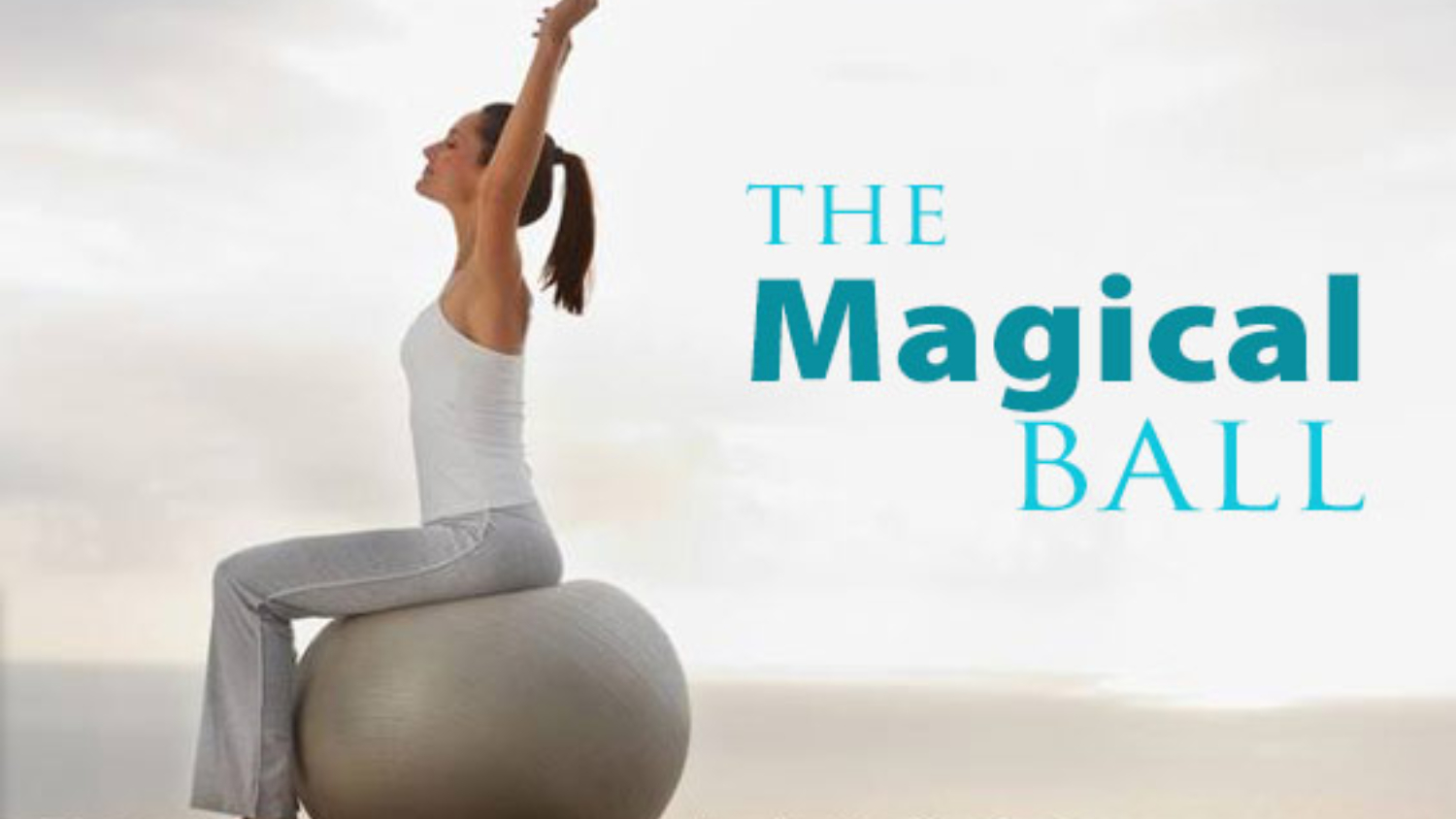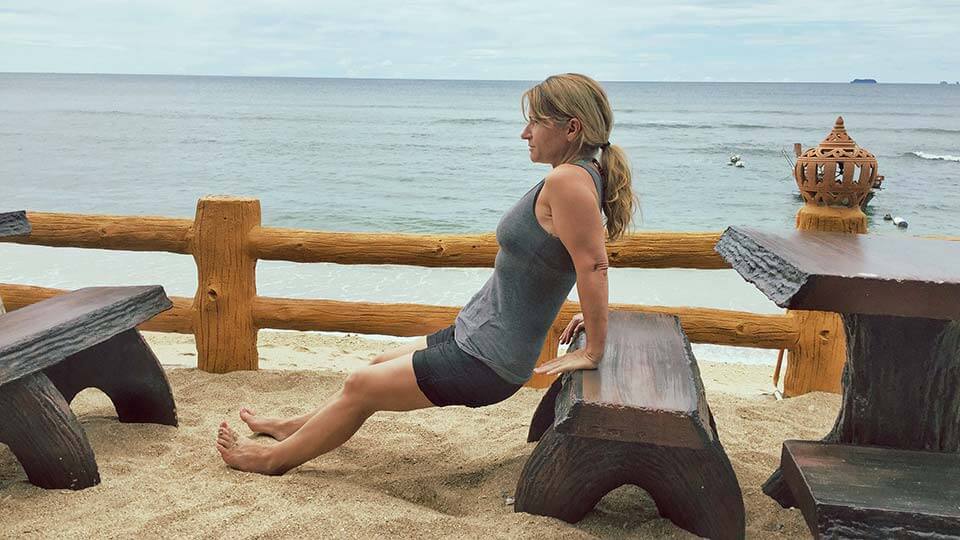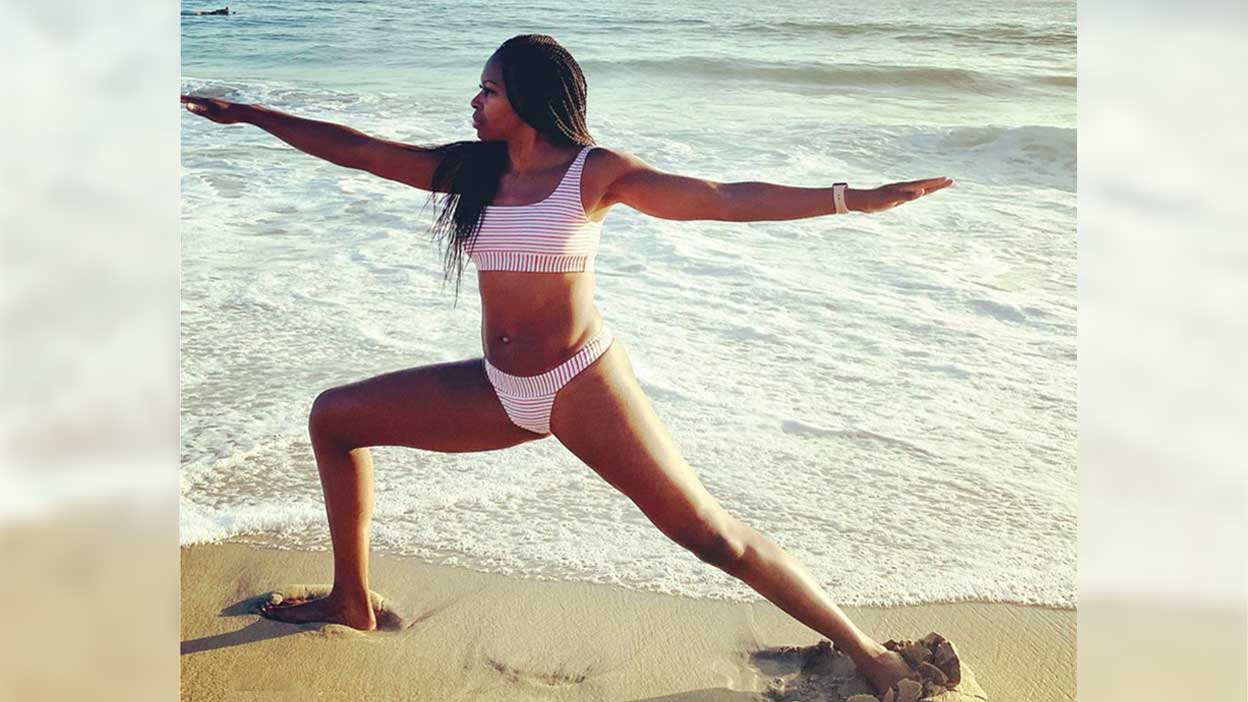Having a Ball While Relieving Back Pain

I can identify with guest author Elisabeth Crawford's plight—of all the things we've done to and with our bodies over the years, motherhood strains our backs to their limits. Without a strong and flexible back you can't really accomplish much of anything. Case in point: Last year while I was finishing up my book, I threw out my back while doing housework (see, housework is no good). I was in agony for three months. I couldn't put my own shoes on. Rolling over in bed took 10 minutes and brought me to tears. You don't want to go there, so protect your back with these (fun) exercises from Elisabeth. It only takes a few minutes, and can spare your pain both now and in your future.
Back pain affects an estimated 80% of the population at some point in their lives
As a contemporary dancer in my 20s, a Pilates instructor in my 30s, and a mom in my 40s, I sure know I’ve had my share of aches and pains.
Motherhood—with its accumulated hours of hunching over the changing table, leaning over the bathtub, slouching in the rocking chair, and lugging a 30-pound toddler plus stroller onto the city bus—has nearly done my body in. Fortunately, I have my Ball to turn to. While both Pilates and stability ball training are effective methods for increasing strength and flexibility, I give the Ball an edge up for its “fun factor.” Plus, it can address back pain in ways that other techniques are lacking.
- The Ball’s main advantage is that it is an unstable surface. During any exercise, it automatically forces the body’s “core” muscles—the abdominal and back muscles that support the spine—to work in order to maintain balance.
- Both slouching and overarching can lead to increased pain by placing added stress on the back’s muscles, tendons, ligaments, discs, and joint structures. Used as a chair, the Ball can help a person find perfect posture, or “neutral spine,” which is the alignment of the spine that maintains its natural, healthy curves.
- Sore muscles need gentle stretching. Since the Ball allows for fluid motion rather than static positioning, the body is able to roll into the precise spot that will provide the optimal stretch.
To ease the aches and pains in your own back, try the following five basic Ball exercises:
Shoulder Bridge
Lie on your back, resting your legs on top of the Ball with your knees bent. Rolling through your spine, one vertebra at a time, slowly press your hips up toward the ceiling. From there, roll your spine back down to the floor. (For more challenge, place your feet on top of the Ball, with your legs straight. Or try performing the exercise with your arms raised off the floor.)
Quadruped
Lie with your stomach on the Ball and both hands and feet on the floor. Raise your opposite arm and leg into a horizontal position. Hold your balance for 5–10 seconds (or longer). Repeat on the other side.
Flat Back
Sit on the Ball. Slowly walk your feet forward until your shoulders and head are resting on top of the Ball. Press your hips up in line with your knees and shoulders, reaching your arms overhead. From there, reach your arms forward and walk your feet in, bringing yourself back to a sitting position.
Back Stretch
Sit on the Ball. Slowly walk your feet forward until your lower back is resting on the Ball. Straighten your legs, allowing your body to lie back and drape over the Ball. Reach your arms overhead, or else place your hands behind your head to support your neck.
Side Stretch
Lie sideways on the Ball with your legs straight, your top leg in back, and your top arm overhead. Repeat on the other side. (Try rolling into the Back Stretch position as you transition from one side to the other.)
--
A former modern dancer and choreographer, Elisabeth Crawford was a Pilates instructor for twelve years before becoming a full-time mom. She is the author of two books: Balance on the Ball: Exercises Inspired by the Teachings of Joseph Pilates and Flavors of Friuli: A Culinary Journey through Northeastern Italy. For more information, please visit www.BalanceontheBall.com.
Post Photo: Photolia


